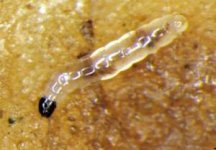Dollar
Active member
I’ve been growing for 31 years and have seen it all at least that’s what I thought. I have newly rooted clones in 4” coco pots about 2 weeks. A week ago one died, then the next day 2 and every day after a few die each day. These plants are not overwatered or under watered, over fed or under fed. Same mix I’ve been using for years with no issues. Today I broke out the magnifying glass and inspected the roots, stems and leaves of one of the dead plants. At the base of the stem where it meets the coco there are clear larvae with black heads burrowing in the stem. There were many and lots of tunnels. You can tell they’ve been working hard. Keep in mind I could only see these with a magnifying glass that’s how small they are. What are these things and how do I get rid of them?



